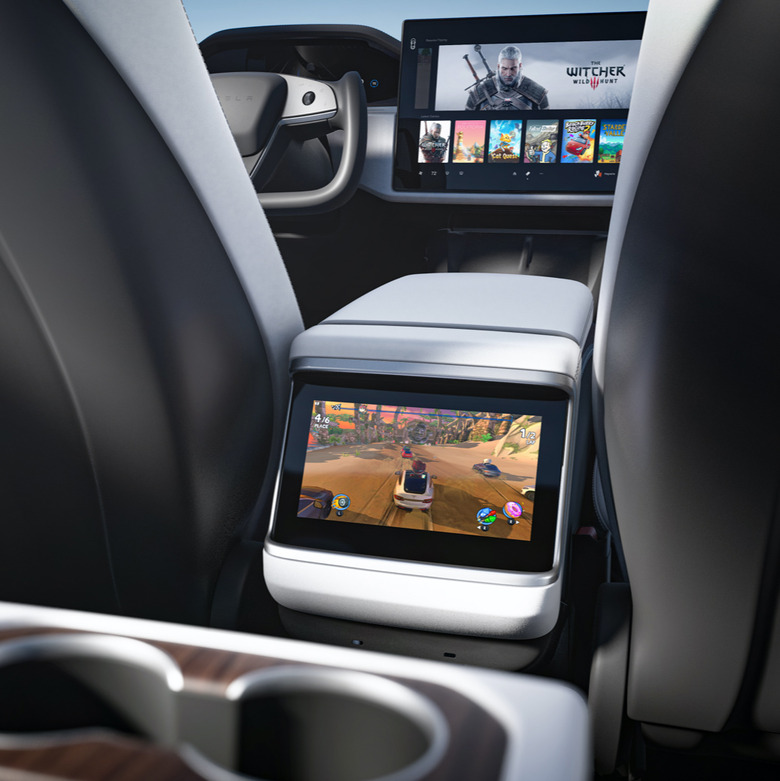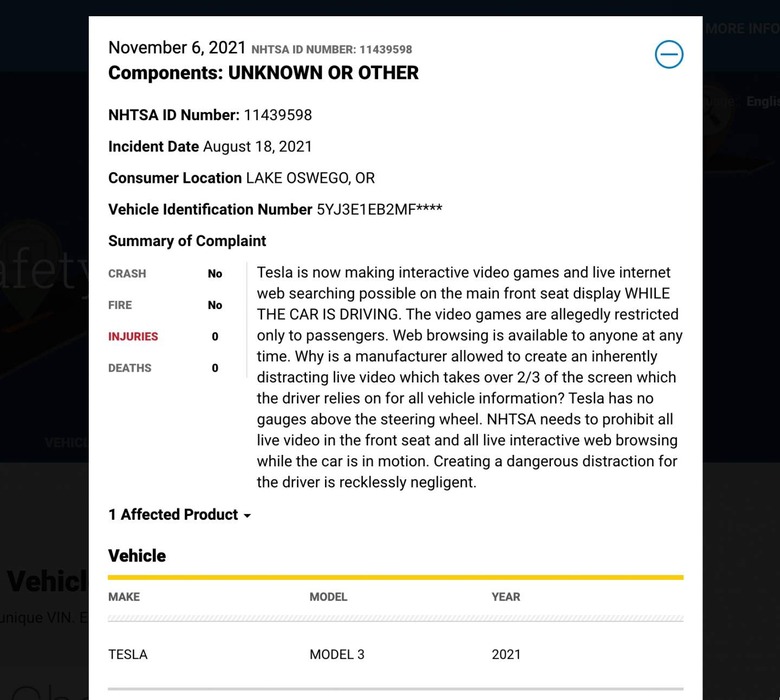Tesla Faces US Safety Investigation Over In-Car Gaming
More than half a million Tesla cars are under a preliminary safety investigation, with the US NHTSA concerned that games playable on the dashboard touchscreen could distract a driver while the EVs were moving. Tesla Arcade launched in mid-2019, offering a selection of titles like Beach Buggy Racing 2, but it's a more recent update which has the US Department of Transportation's National Highway Traffic Safety Administration concerned now.
"Passenger Play" is offered on Model 3, Model S, Model X, and Model Y vehicles from the model years 2017 to 2022. That's approximately 580,000 cars and SUVs, the NHTSA said in a new Office of Defects Investigation (ODI) resume.
The concern is that, while Tesla Arcade originally would only allow access to games while the EV was in park and stationary, in the time since launch that has changed. Now, the system presents a button and asks the front seat passenger to confirm that they – rather than the driver – will be playing the game while the vehicle is in motion. Games also warn that play is only for passengers in that situation.
The new "Preliminary Evaluation" wasn't prompted by a crash or incident, but a complaint to the ODI filed in November 2021. A Vehicle Owner Questionnaire (VOQ) confirmed the NHTSA that Tesla has offered this "Passenger Play" feature since December 2020. "Prior to this time," the resume adds, "gameplay was enabled only when the vehicle was in Park."

Unsurprisingly, the concern is that the driver could either press the button and pretend that a passenger was using the game, or even simply have their eye caught by what was happening while someone else in the Tesla was playing. As such, it "may distract the driver and increase the risk of a crash," the NHTSA explains.
"This PE has been opened to evaluate the driver dictation potential of Tesla "Passenger Play" while the vehicle is being driven," the agency adds. "Through this PE, ODI will evaluate aspects of the feature, including the frequency and use scenarios of Tesla "Passenger Play.""

Minimizing just what extraneous information a driver might see has been an increasing area of focus for automakers and safety regulators alike, particularly in the last few years when smartphones and complex infotainment systems have proliferated. While in-car entertainment once consisted of a radio and CD player with physical buttons, it's now far more common that drivers will interact with touchscreens and smartphone-projected interfaces. However, research by agencies like the NHTSA has indicated that even taking your eyes off the road for a few seconds to check a phone or other UI can lead to dozens or more miles of distracted driving.
Expectations by vehicle owners, meanwhile, are more often bumping up against that regulatory caution. Though the Tesla Model S arguably began the trend toward huge dashboard displays, they're far more commonly implemented now. That has led to calls for access to internet browsers, games, multimedia, and other features, both when the vehicle is stationary and to help occupy passengers.
The Polestar 2's Android Automotive OS-powered dashboard, for example, has just gained a web browser, through which streaming media including video can be accessed. However, that automatically switches into an audio-only mode when the EV is shifted out of park.
There's no telling exactly what the outcome of the NHTSA's investigation may be, though given Tesla's frequent use of OTA (over-the-air) updates it's entirely possible that the agency might demand a change to how Tesla Arcade and Passenger Play are presented on-screen.
